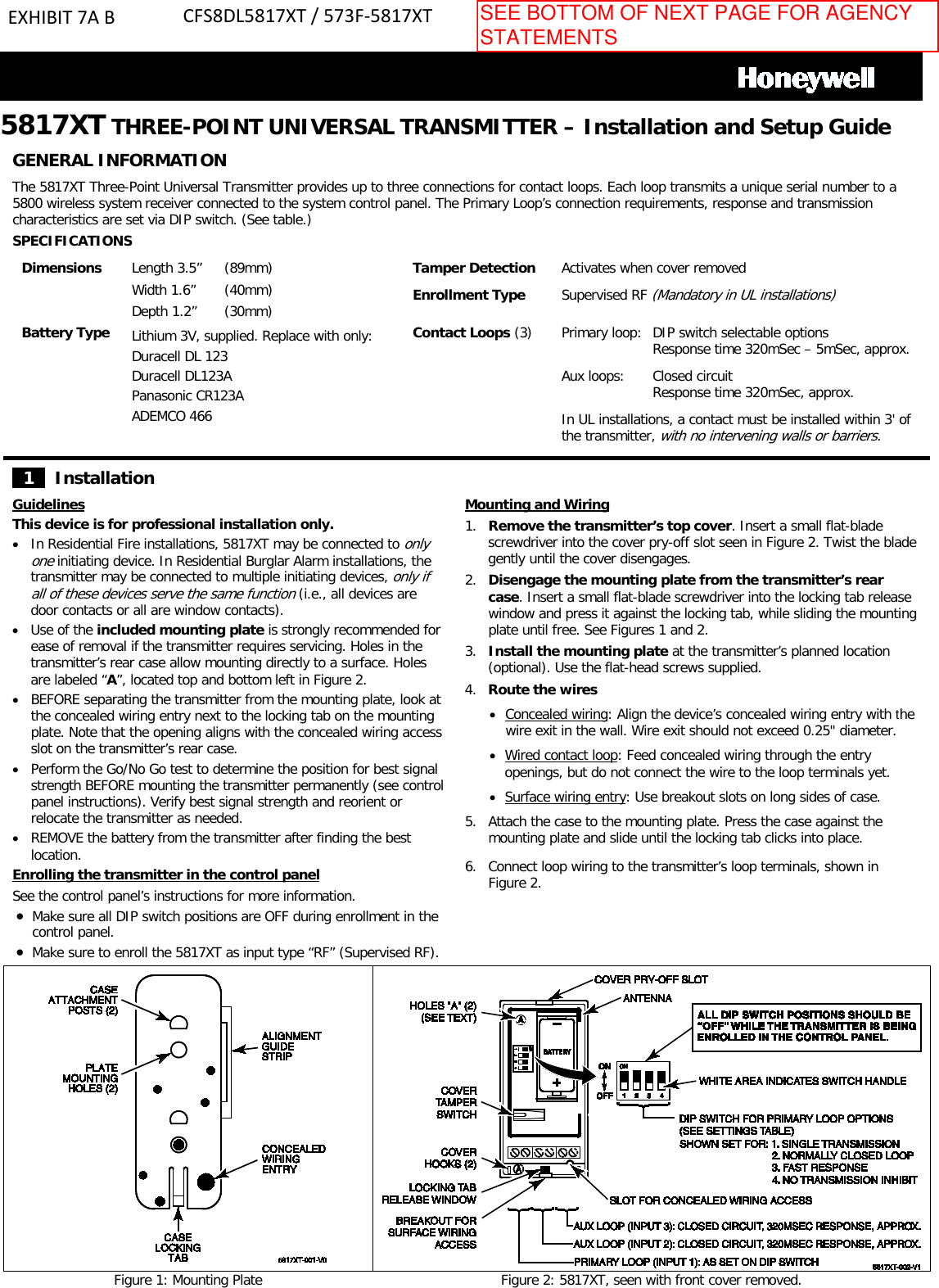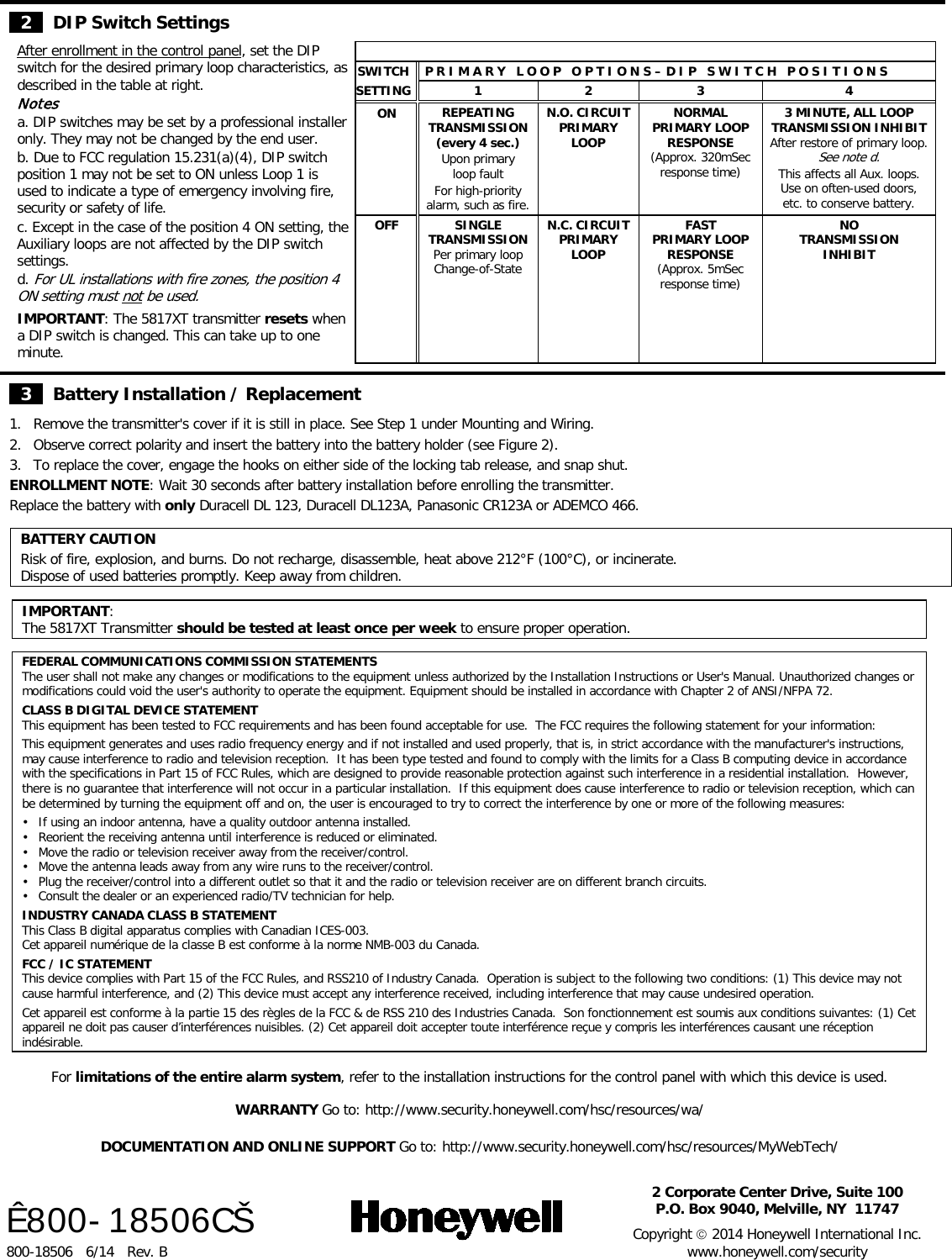Ademco 8DL5817XT Three Zone Universal Transmitter User Manual 5817XT THREE POINT UNIVERSAL TRANSMITTER
Honeywell International Inc. Three Zone Universal Transmitter 5817XT THREE POINT UNIVERSAL TRANSMITTER
Ademco >
Contents
- 1. Installation Instructions Revised
- 2. Carton Install Info
Installation Instructions Revised

